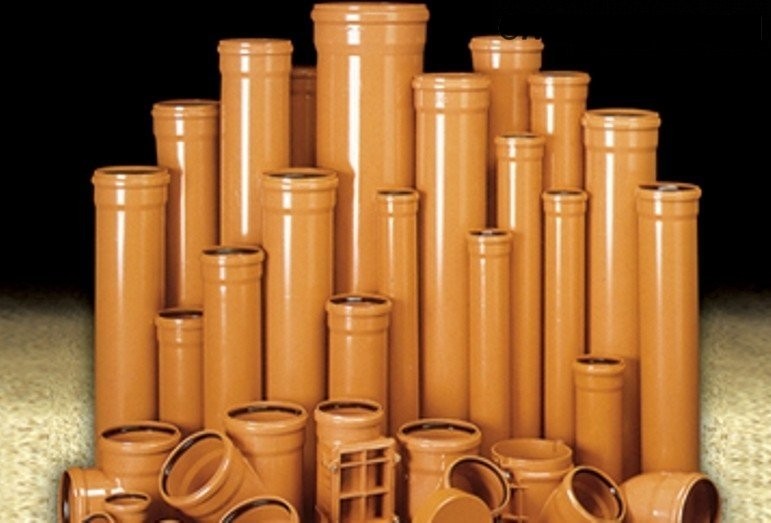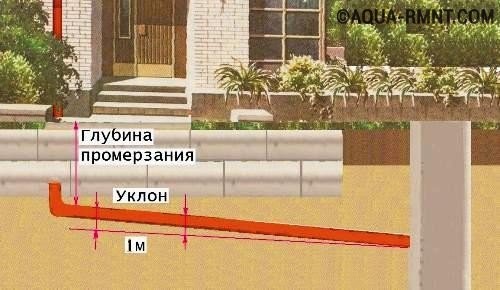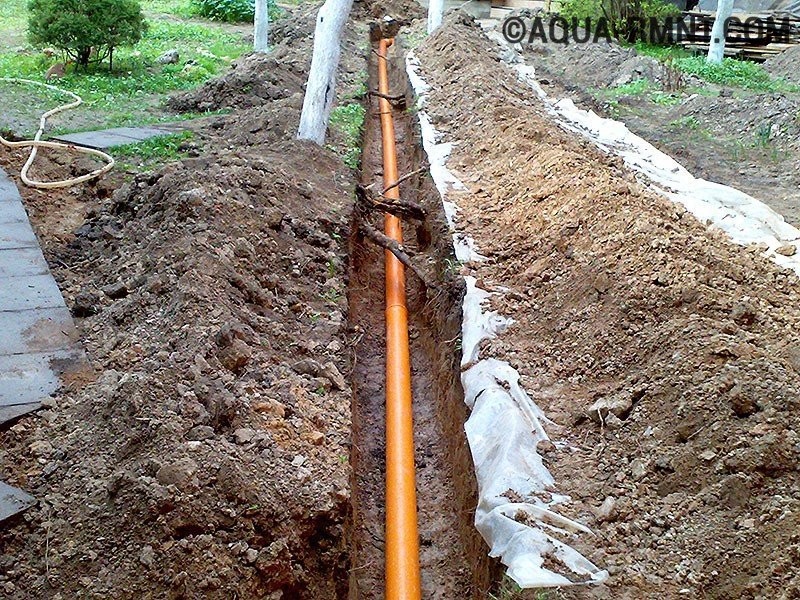Laying the sewerage of a private house does not require any complex skills, special tools or deep special knowledge. However, small errors during installation work can later lead to serious damage to the system. A layer of soil exerts quite serious pressure on communications, they are exposed to cold, moisture, etc. Therefore, it is necessary to take care in advance that the laying of sewer pipes in the ground is done correctly.
Types of sewer pipes and their features
The process of laying an external sewage system looks quite simple. The pipes are laid in a dug trench, joined to the system located inside the house, as well as to the collector, then covered with earth. Before you draw up an external sewerage project, you need to decide on the type of pipes. The dimensions of the trench, slope, etc. depend on the diameter, section and material of these elements.
The pipes that are used to create an external sewage system are distinguished by many parameters, such as diameter and cross-sectional configuration, as well as material. Today, sewer systems are made from:
- cast iron;
- ceramics;
- concrete;
- asbestos cement;
- plastic;
- fiberglass.
Cast iron pipes weigh quite a lot, their inner surface is not too smooth, and installation is very difficult, so this type of sewerage is rarely used in household plots. Ceramic elements are easier to mount, but they can be easily damaged if handled carelessly. Concrete structures of heavy weight are also difficult to install, so they are rarely used for external sewerage of a private house. Inexpensive and lightweight asbestos-cement structures have been popular in the past, but they are somewhat fragile, and the smoothness of their internal surface leaves much to be desired.

Plastic pipes for outdoor sewerage are usually orange in color to distinguish them from elements for the internal system. These pipes are light, strong and easy to install.
The undisputed leader in the market of sewer systems is plastic. Pipes made of PVC, PP, PVP have all the characteristics required for outdoor sewage:
- light weight;
- significant strength;
- resistance to chemicals;
- ease of installation;
- smooth inner surface;
- the ability to tolerate very low temperatures, etc.
Very good for sewage and fiberglass, which is a composition of polyester resins, reinforced with special fiberglass. However, such structures weigh much more and are much more expensive.
To create a sewerage system in a personal plot, plastic pipes of circular cross section are most often used, the diameter of which is usually 110 mm. When laying pipes using the puncture method, for example, under the roadway, as well as in other places with a high load, it is recommended to use two-layer pipes with a corrugated outer surface.
Note! Polyvinyl chloride (PVP) pipes can only withstand temperatures up to 40 degrees, while polypropylene (PP) structures can withstand temperatures up to 80 degrees. High-strength polyethylene (PVP), which is used in the manufacture of sewer pipes, occupies an average position in terms of heat resistance.
The order of work when creating an external sewer
The laying of sewer pipes begins with the project. It is recommended to make a trench with a minimum number of bends, the optimal solution is a completely straight pipe without any turns. If you can’t do without them, and the length of the system is more than 12 meters, manholes are installed in such places, since it is here that blockages and breakdowns most often occur.
Note! Even ideally straight sewers must be provided with manholes every 25 meters.
It is important to correctly determine the depth of the sewer pipe. When determining it, the depth of soil freezing and the level of entry of the sewer pipe into the septic tank or pipe of the centralized sewer system are taken into account. In addition, the necessary sewerage slope should be provided, which is 2 cm per linear meter of construction.

When determining the depth of laying pipes for external sewage, one should take into account the level of soil freezing, the required slope, as well as the depth at which the pipes will be connected to the treatment plant
Often, creating a sufficiently deep trench turns out to be too laborious, and sometimes impossible. In this case, it is necessary to carry out thermal insulation work to protect the drains from freezing in winter. According to the rules for laying sewer pipes, the minimum trench width is defined as the diameter of the pipe plus 20 mm on each side for pipes. If the pipe is wider than 200 mm, the free space should be increased, otherwise it will be difficult to carry out the correct installation of the structure.
After the plan is drawn up and all factors are taken into account, work begins. For the installation of external sewerage, you should:
- Dig a suitable trench.
- Lay a sand cushion about 50 mm thick on the bottom.
- Thoroughly tamp the bottom of the trench.
- Lay and connect sewer pipes.
- Connect them to the internal sewerage and to the septic tank.
- Check the operation of the system and make sure it is tight.
- Fill the space on the sides of the pipes with sand, tamping it in layers.
- Fill up the sewer from above.
Note! A layer of sand or soil laid on top of sewer pipes does not need to be compacted.
The practical experience of the outdoor sewerage device is presented in the following video:
When figuring out how to properly lay sewer pipes, you should take into account the recommendations of experts:
- the number of joints and turns should be minimal;
- all sockets must be directed towards the movement of drains;
- it is impossible to shorten sockets and shaped elements;
- pipes should be fixed to ensure the correct slope of the sewer.
To maintain the slope, a marking cord is used, which is pulled along the bottom of the trench.



















